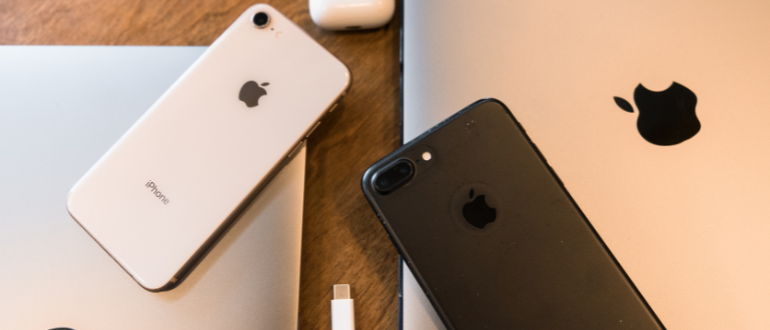
For years, Apple’s iPhone has stood as a symbol of global premium tech appeal — a device that set the tone for mobile innovation and captured mindshare across continents. But recent data is telling a new story. According to a fresh analysis from the Jemlit team, it appears that the iPhone’s global market share peaked in 2023, and since then, it’s been on a slow, steady decline — one that seems to be accelerating in the first half of 2025.
Let’s be clear: Apple is not exactly in crisis. It’s still holding its lead — albeit a narrowing one — over its longtime rival Samsung in overall global smartphone market share. But the Jemlit report reveals an intriguing twist: Apple’s losses haven’t been Samsung’s gain. In fact, Samsung’s share has dipped slightly as well. And contrary to what you might expect, Huawei isn’t riding this wave either.
Instead, it’s a host of other Chinese phone manufacturers — think Xiaomi, Oppo, Vivo, and Transsion — who are quietly scooping up the dropped market share. These brands are winning in the massive, and increasingly influential, Asian markets, and in doing so, they may be reshaping the global mobile landscape in the process.
But here’s where the story gets even more interesting: Apple isn’t losing ground everywhere. The Jemlit data shows that in the United States — Apple’s spiritual and financial home — iPhone market share has actually grown during this same time. The same holds true for Europe, where Apple continues to enjoy strong brand equity and consumer loyalty. These are high-margin, highly desirable markets, and Apple’s dominance here keeps its revenue machine humming.
The issue, however, is one of scale. While the US and Europe are important markets, they pale in comparison to the sheer numbers coming out of Asia — specifically China and India. With each country hovering around the 1.5 billion population mark (possibly even more), they represent the largest concentrations of mobile users on the planet. In raw numbers, China and India combined have more mobile phone users than the US has people. That means losing share in these markets has an outsized effect on Apple’s global numbers, even if things are going well in the West.
It’s no secret that Apple has had a rocky relationship with the Chinese market. Geopolitical tensions, nationalistic consumer behavior, regulatory pressures, and fierce local competition have all made China a tough nut to crack. Apple’s strategy to hedge against China risk was to double down on India — investing in local manufacturing, courting the Modi government, and opening flagship stores in major cities.
So far, though, that bet hasn’t paid off.
Jemlit’s data shows that Apple’s market share in India is stagnant at best, and falling at worst. Chinese competitors with deep local roots, aggressive pricing strategies, and increasingly competitive hardware are eating Apple’s lunch. And while the Made-in-India iPhone story may hold long-term potential, it hasn’t yet translated into meaningful market share.
This begs the question: Are we seeing the Balkanization of the global smartphone market?
That is, are we headed toward a world where mobile platform dominance is no longer global, but regional? One where the US and Europe remain iPhone/Samsung strongholds, while Asia — home to the majority of global phone users — becomes a multipolar, fragmented landscape dominated by a mix of local brands?
From a consumer standpoint, this might sound like a good thing. More choice, more competition, more innovation, better pricing — this is the textbook promise of market economics. And sure, that’s true up to a point.
But tech markets don’t always behave like textbook cases. Platform dominance often leads to stronger ecosystems. Think about app developers, accessories, enterprise compatibility, support infrastructure. A dominant platform makes it easier to build and grow around it. Balkanization, on the other hand, can lead to fragmentation — where app developers, for instance, have to test across dozens of hardware variants and software layers. Sound familiar? That’s where we were in the early Android days.
And then there’s the geopolitical angle. Tech sovereignty is becoming a hot-button issue around the globe. Nations want control over their data, their infrastructure, their supply chains — and yes, their phones. China doesn’t want to rely on American platforms. India wants to be a manufacturer, not just a consumer. The US wants to protect its crown jewel tech companies. You can draw the lines yourself — the Balkanization isn’t just happening, it’s accelerating.
So is Apple’s slipping global market share the result of some strategic missteps, or is it simply the consequence of these tectonic geopolitical and economic shifts?
The answer, as always, is probably a bit of both. Apple remains a juggernaut. Its brand power, product quality, and loyalty in key markets are unparalleled. But it’s increasingly clear that its growth story — at least on a global basis — is facing headwinds that sleek design and marketing alone won’t fix.
Whether this fragmentation is good or bad depends on your vantage point. Consumers may benefit in the short term. Developers and ecosystem builders may groan. But one thing’s for sure — the mobile phone market isn’t what it was just two years ago. And in a world where regional interests, local champions, and global giants are all colliding, it’s going to be a fascinating fight for your pocket.
Stay tuned.

